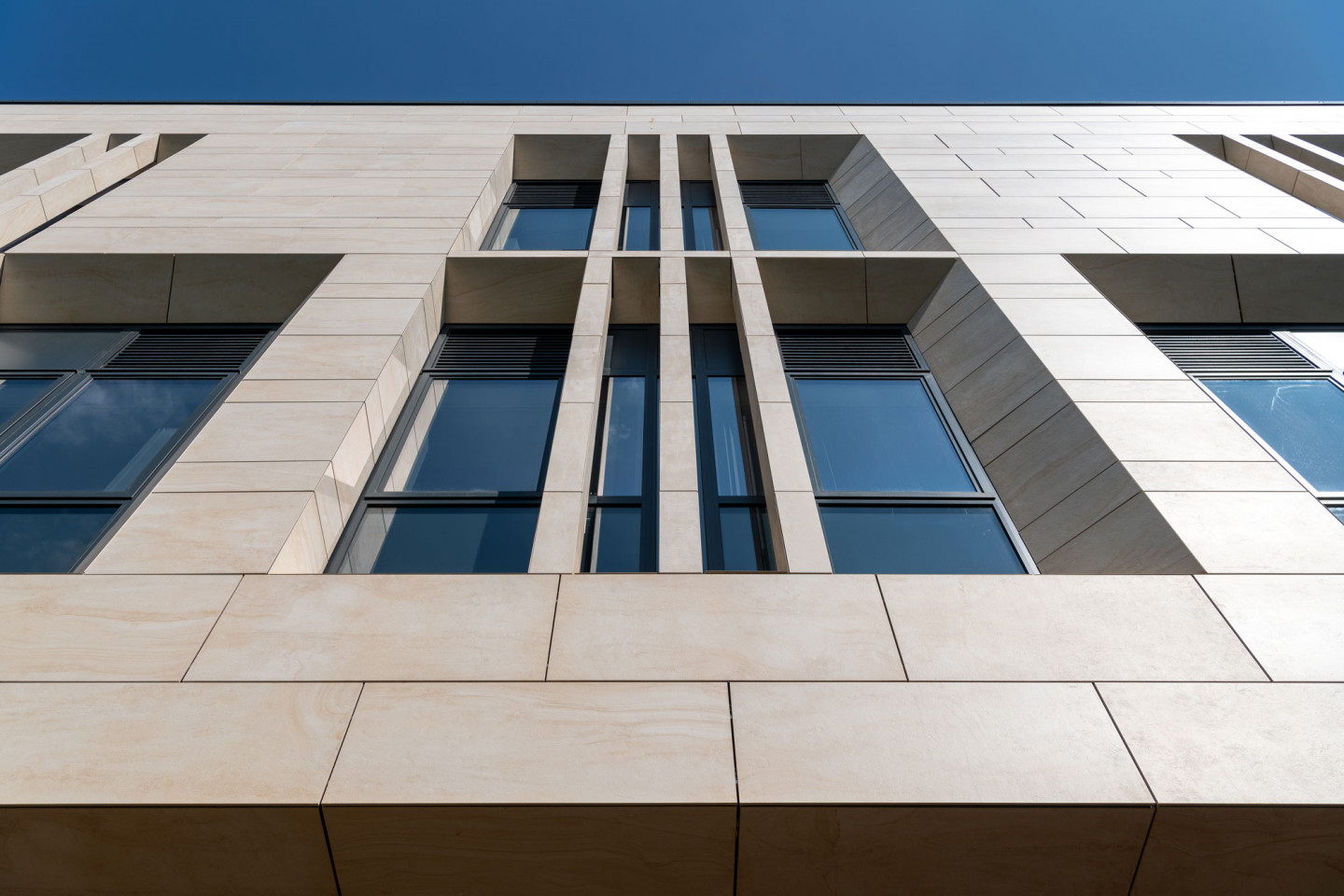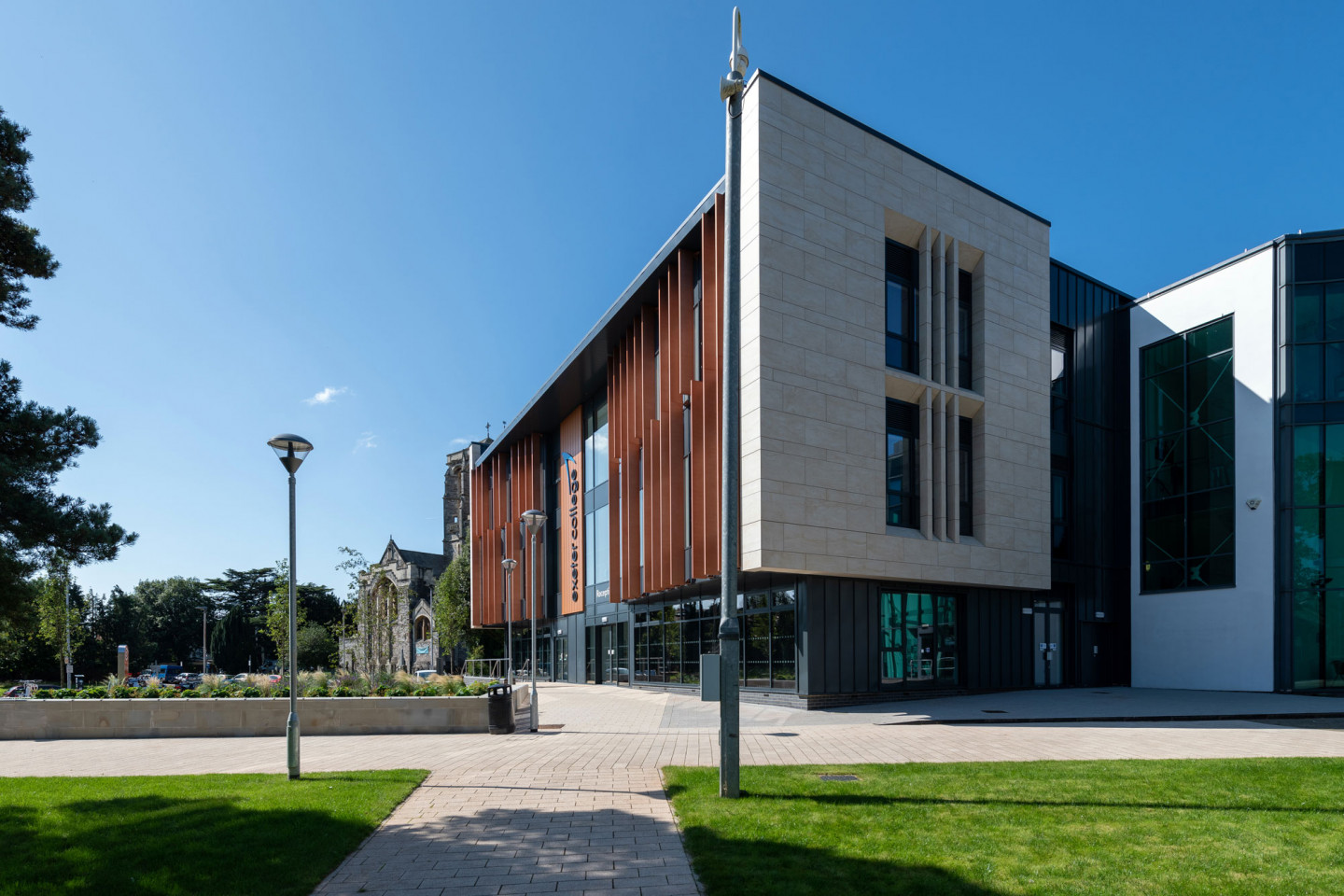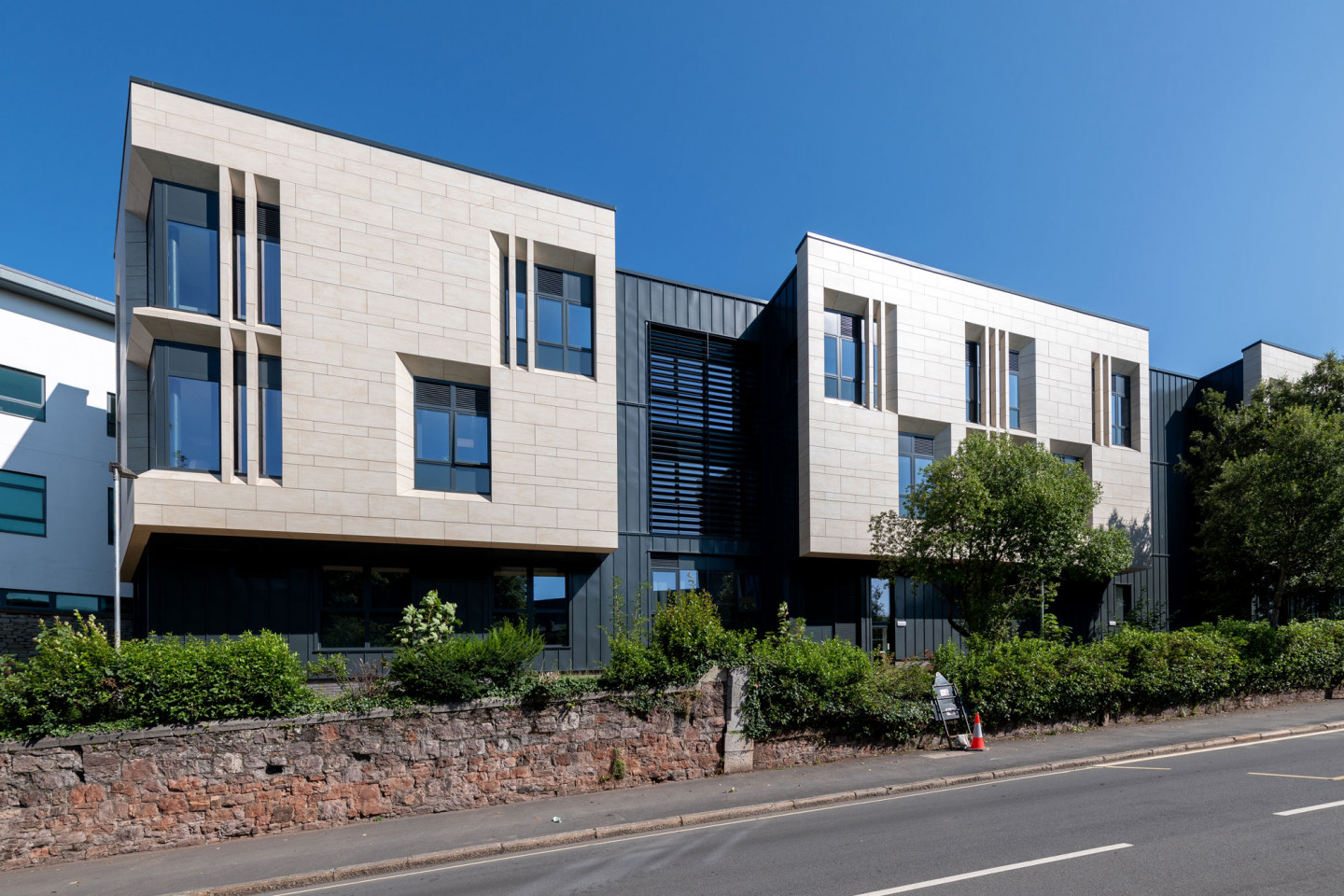As the UK targets a high-tech future of world-leading innovation and industrial excellence, we need the skills and knowledge to provide employers with the resources they need to achieve those ambitions. A key part of the Government’s strategy for skill development in digital and engineering disciplines is the establishment of 12 Institutes of Technology (IoTs); collaborative partnerships between FE colleges, universities and employers that focus on education in STEM subjects to offer businesses the skills they need to grow,
One of the new IoTs is SWIoT, the South West Institute of Technology, which is based at Exeter College and is partnered by the Universities of Exeter and Plymouth, along with a number of FE colleges in the region and employers including the Met Office, babcock and TDK. The new IoT is located in an existing building on the Exeter College campus, which has been refurbished and extended in a project designed by AWW Architects, which forms the first development in a proposed 15-year masterplan at the college.
The building not only needs to attract talented and ambitious students; it also has to articulate the prestige of the IoT and provide a learning and research environment with which corporate partners want to be associated. As a result, the façade chosen for the project had to meet the requirement for a forward-focused, dynamic education environment. However, the contemporary building is located within a conservation area and opposite a grade I listed church, with other listed heritage buildings in close proximity. As a result, Shackerley’s SureClad® Ceramic Granite system was selected in a creamy beige, natural Lopar colourway, to offer a clean, contemporary façade that complements the pale stone tones of the surrounding architectural environment. This was used in combination with glazing, and copper-coloured panels that create contrast and enhance the building’s contemporary aesthetic.
Charles Jordan, project director at AWW explains: “The extension creates a new showpiece entrance to the college and sits in a prominent location on the edge of the campus. The three-storey atrium links the IoT to the existing Hele building with a 40m glazed rooflight to allow natural light into the space and showcase the dynamic curriculum being delivered.
“We needed a façade design and specification that respected the project’s heritage surroundings, while reflecting the focus on technology and the future that sits at the heart of the IoT. We also needed a system that offered buildability and long-term maintenance advantages and Shackerley SureClad® Ceramic Granite system ticked all the boxes on all counts.”
Design
The east elevation of the new building is both the front of the development and the new entrance for the college. It has been designed as the gateway to the campus and has an active frontage for pedestrians with a heavily glazed front elevation at ground floor level. This elevation tapers towards the entrance from the North and South elevations, drawing the eye to the feature entrance in the centre.
It is the south elevation that reveals the subtly sympathetic references to local buildings in the design. This area of the building envelope also highlights the versatility of the SureClad® Ceramic Granite system, along with the ISO 9001 quality assured accuracy of manufacturing provided by Shackerley at the company’s Lancashire factories.
Charles Jordan explains: “We included fins in the façade design, which have been clad using Shackerley’s SureClad® Ceramic Granite system. These provide a contemporary interpretation of the window details on the nearby Grade I listed St David’s church. We have also reimagined the splayed window reveals seen on the church as chamfered window returns on the new building, connecting the modern college building with its surroundings.”
Having worked with Shackerley before on previous projects, the AWW Architects team was aware that the cladding producer has the technical expertise and specialist manufacturing capabilities to accurately recreate these design elements. Shackerley manufactured bespoke cladding details for the sloping recessed window soffits, cills and angled window returns to create splayed window reveals, along with bespoke bracketry to ensure a neat finish to the installation.
Buildability
The design and specification of the SWIoT building had to take into consideration the need to construct the extension and refurbish the existing building on a tight site within an operational campus. As a result, the new build project was designed with a lightweight frame and the Shackerley SureClad® Ceramic Granite system, installed using the SureClad® Hang On installation system was compatible with the loading requirements for this construction strategy, thanks to the slim and lightweight large format, 1198 x 598mm, panels.
“Use of the Shackerley SureClad® system not only enabled us to specify a building envelope that was compatible with the lightweight frame,”, Charles Jordan continues, “it also allowed us to avoid the use of a full scaffold, which had both cost and programme benefits for the project.”
In addition to buildability requirements, the AWW Architects team also had to consider the long-term maintenance properties of the Shackerley SureClad® Ceramic Granite system. As a prominent and prestigious building on the campus, the SWIoT extension must retain its high-end appearance over time, while avoiding excessive cleaning and maintenance regimes for the college.
“Pale coloured façades can be a risk for the long-term aesthetics of a building like this one, but Shackerley’s ceramic granite is non-porous, which ensures excellent resistance to algae and graffiti, and overcomes the potential for discolouration due to contaminants,” Charles Jordan continues.
“SureClad® Ceramic Granite is also A1 rated non-combustible to BS EN 13501-1 and, this also provides reassurance for the client in terms of both safety and long-term maintenance by futureproofing the façades in anticipation of future fire safety specification requirements.”
Flexibility
Shackerley manufactured SureClad® Ceramic Granite panels for a total façade area of 708m2 for the SWIoT project at one of the company’s ISO 9001 factories in Lancashire and was able to schedule delivery of each numbered consignment to site, aligned to the installation programme.
The building is now complete and the new IoT will play a key role in supporting digital and engineering businesses while providing rewarding career paths for current and future generations.



